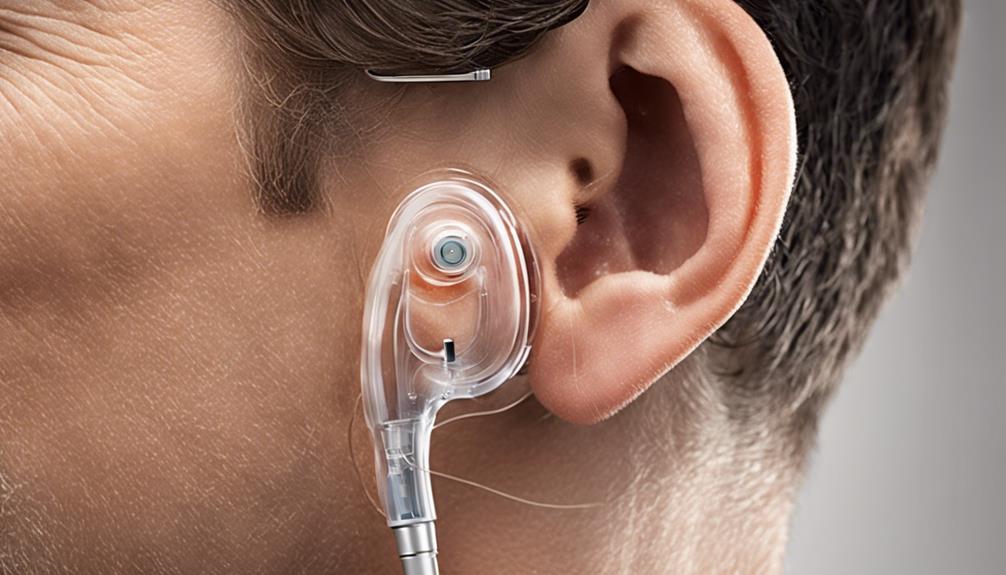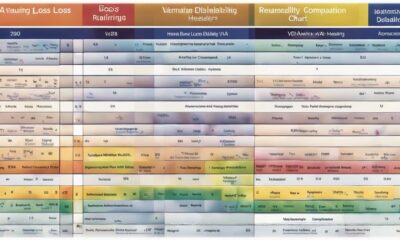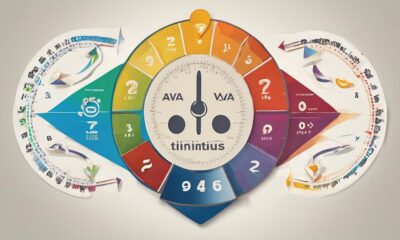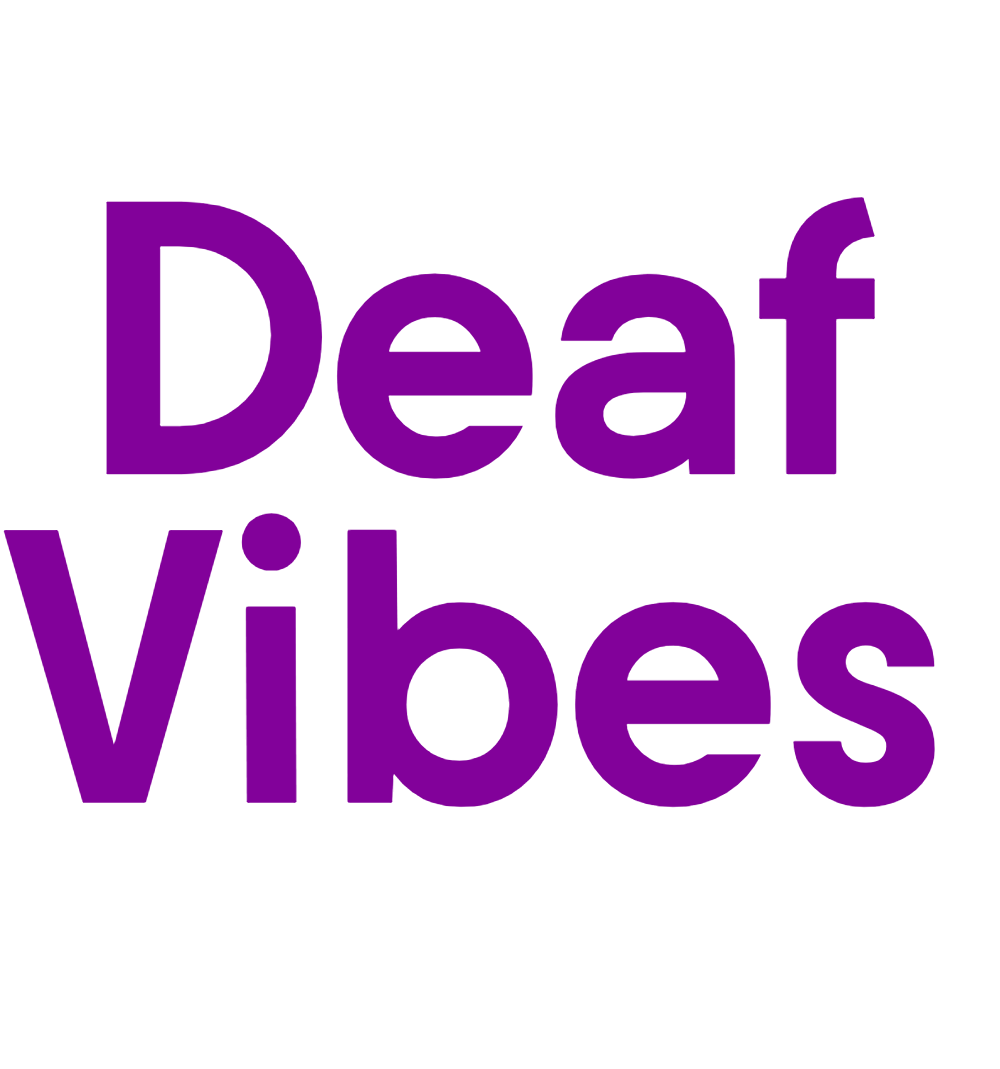Hearing Aids
What Are Clear Hearing Aids and How Do They Work?
Journey into the world of clear hearing aids to discover the cutting-edge technology that makes conversations crystal clear.

You may believe that transparent hearing aids are similar to the traditional models, but they offer more than what initially appears. These inconspicuous gadgets utilize cutting-edge technology to improve audio clarity and minimize ambient noise, thus making dialogues crisper and more pleasant.
But how exactly do these sleek gadgets achieve such impressive results? Let's uncover the science behind clear hearing aids and explore the innovative features that set them apart from traditional models.
Key Takeaways
- Clear Hearing Aids enhance sound perception and speech clarity for users.
- They use advanced digital technology to process sound and reduce background noise.
- These aids amplify sounds and improve overall sound quality for users.
- Clear Hearing Aids offer Bluetooth connectivity and physical buttons for easy adjustments.
Clear Hearing Aids: An Overview
Clear Hearing Aids, a specific model of over-the-counter hearing aids, feature a traditional behind-the-ear design with an in-ear receiver. These aids come equipped with physical buttons for convenient volume control and the ability to switch between different sound modes. One of the standout features of Clear Hearing Aids is their Bluetooth connectivity, allowing users to seamlessly connect to their smartphones for making phone calls and streaming media.
The traditional design of Clear Hearing Aids ensures a comfortable fit while housing the technology necessary for improved hearing. The in-ear receiver delivers clear sound directly to the user, enhancing the overall listening experience. With the added convenience of Bluetooth connectivity, users can easily switch between taking phone calls and enjoying media streaming without the hassle of external wires.
Technology Behind Clear Hearing Aids

Utilizing advanced digital signal processing technology, the inner workings of modern clear hearing aids are engineered to enhance sound quality and provide a seamless listening experience. These devices typically feature a behind-the-ear design with an in-ear receiver, optimizing sound delivery directly into the ear canal. Clear hearing aids offer physical buttons for easy access to volume control and different sound modes, enabling users to personalize their listening experience to suit various environments.
Moreover, many clear hearing aids are equipped with a companion app that allows users to fine-tune settings and access additional sound modes for a customized feel. A notable feature in these aids is wind noise reduction, which helps minimize interference from outdoor elements, ensuring clearer sound perception. Additionally, these devices are designed to reduce unwanted amplification of background noise and the wearer's own voice, enhancing the overall clarity of incoming sounds for a more comfortable and natural listening experience.
Key Differences From Traditional Aids
When comparing clear hearing aids to traditional aids, a noticeable distinction lies in their approach to sound amplification and technological features. Clear hearing aids, such as the Sennheiser All-Day Clear, are over-the-counter devices with a traditional behind-the-ear design and in-ear receiver.
Here are some key differences:
- Physical Buttons and Controls: Clear hearing aids feature physical buttons for volume control and sound modes, allowing users to make basic adjustments easily. This offers a more tactile and straightforward method of tuning compared to some traditional aids.
- Limited Effectiveness in Noise Reduction: Clear hearing aids may struggle with wind noise reduction, potentially amplifying unwanted sounds like keyboard noises. This limitation can affect the overall user experience, especially in noisy environments.
- Advanced Connectivity Options: Clear hearing aids provide Bluetooth connectivity for phone calls and media streaming, enhancing the user's connectivity experience. However, despite these features, criticisms have been raised regarding their limited effectiveness and high pricing in the market.
How Clear Hearing Aids Improve Hearing

Improving hearing through clear hearing aids involves enhancing sound perception and speech clarity for individuals with hearing loss, ultimately aiming to make daily interactions more accessible and enjoyable. These aids work by amplifying sounds using components like a microphone, amplifier, and receiver, which work together to enhance sound perception.
By amplifying sounds, clear hearing aids help individuals with hearing loss better understand speech in various listening environments. Additionally, they're designed to improve speech comprehension by reducing background noise, making it easier for wearers to focus on conversations.
Clear hearing aids play a crucial role in enhancing the overall quality of sound for the user, ensuring a more enriched auditory experience. With their ability to reduce background noise and amplify speech, these aids significantly improve the listening experience for individuals with hearing loss, making social interactions and daily communication more enjoyable and accessible.
Understanding the Mechanism of Clear Hearing Aids
Clear hearing aids operate by utilizing advanced digital technology to convert sound waves into numerical codes for processing, enhancing speech signals, and minimizing background noise for improved auditory perception.
The mechanism behind clear hearing aids involves:
- Signal Processing: Clear hearing aids feature sophisticated signal processing strategies that analyze incoming sound waves, identify speech signals, and reduce background noise, ensuring that users receive clearer and more focused auditory information.
- Sound Transmission: These aids are designed to offer better sound transmission, allowing for improved clarity and fidelity in sound reproduction. By optimizing the way sound is transmitted to the user's ear, clear hearing aids enhance the overall listening experience.
- Interference Reduction: Clear hearing aids incorporate technology to minimize interference, ensuring that external noises or disruptions don't impede the user's ability to hear speech clearly. This reduction in interference helps users engage more effectively in conversations and activities.
Frequently Asked Questions
What Is Used for Clear Hearing?
For clear hearing, we rely on various tools and technologies to improve our auditory experiences. These can include hearing aids, cochlear implants, and assistive listening devices. These devices work by amplifying sound, capturing and converting sound waves into electrical signals that the brain can interpret.
Additionally, auditory rehabilitation programs and regular hearing evaluations play a key role in maintaining clear hearing abilities.
How Much Is the Invisible Hearing Aids?
Invisible hearing aids, such as completely-in-canal (CIC) or invisible-in-canal (IIC) models, can vary in price from $1,000 to $6,000 per device. Factors impacting the cost include technology level, additional features, and brand. Higher-end models with Bluetooth or noise cancellation tend to be pricier.
Some insurance plans may cover part of the cost, reducing out-of-pocket expenses. Evaluating the long-term value and benefits is crucial when considering the price point.
Are Hearing Aids Covered by Medicare?
Yes, hearing aids aren't typically covered by Medicare. However, some Medicare Advantage plans might offer limited coverage for them.
It's important for Medicare beneficiaries to explore alternative options such as Medicaid or supplemental insurance for potential hearing aid coverage.
Understanding the limitations of Medicare can help us plan ahead for potential out-of-pocket expenses related to hearing aids.
Can Anyone Wear Invisible Hearing Aids?
Yes, not everyone can wear invisible hearing aids due to factors like ear anatomy or specific hearing needs. These aids are most suitable for individuals with mild to moderate hearing loss seeking discretion. They provide natural sound quality and comfort for extended wear.
While invisible aids are popular for their discreet design, candidacy should be determined by a hearing healthcare professional.
Conclusion
In conclusion, clear hearing aids are like having a personal sound engineer in your ear, constantly adjusting to provide the best listening experience possible.
Imagine being able to hear the world around you with crystal clarity, like a symphony of sounds perfectly orchestrated just for you.
With the advanced technology and features of clear hearing aids, individuals with hearing loss can enjoy a renewed sense of connection and communication in their daily lives.
Hearing Aids
5 Steps to Connect Hearing Aids With Ipad Successfully
Embark on an enlightening journey to seamlessly connect your hearing aids with an iPad in just 5 simple steps – the key to unlocking improved hearing awaits!

We should not depend entirely on one method to effectively connect hearing aids to an iPad. While it may seem daunting, by following these five simple steps, we can establish a seamless and effortless connection.
From enabling Bluetooth on your iPad to fine-tuning settings for optimal performance, each step plays a crucial role in ensuring a successful link between your hearing aids and the iPad.
There's a world of improved hearing waiting for us just around the corner – let's uncover it together.
Key Takeaways
- Enable Bluetooth and download MFi app for connectivity.
- Pair hearing aids with iPad in Settings Accessibility.
- Adjust settings for optimal performance and convenience.
- Test connectivity and personalize audio experience for enhanced hearing.
Enable Bluetooth on Your Ipad
To connect your hearing aids with your iPad, we need to first enable Bluetooth on the iPad by navigating to Settings and activating the Bluetooth feature. This is essential for establishing a wireless connection between the two devices. Once in the Settings menu, locate the Bluetooth option and toggle it to 'On' to make your iPad discoverable to other devices, including your hearing aids.
Before attempting to pair your hearing aids with the iPad, ensure that the hearing aids are in pairing mode. This step is crucial for the devices to recognize each other and establish a connection successfully. Once both devices are ready for pairing, select your hearing aids from the list of available devices on the iPad's Bluetooth settings.
After successfully pairing your hearing aids with the iPad, you can now adjust the volume, settings, and other features of your hearing aids directly from your iPad. This seamless integration allows for a personalized and convenient experience in managing your hearing aid settings.
Download and Open the Hearing Aid App

After successfully enabling Bluetooth on your iPad and pairing your hearing aids, the next step is to download and open the specific hearing aid app from the App Store on your iPad. Search for the app designed for use with MFi hearing aids, which ensures compatibility and optimal functionality. Once downloaded, open the app and follow the on-screen instructions for setup and connection. Make sure your hearing aids are powered on and within Bluetooth range of the iPad for a seamless connection.
Within the app, you can customize various settings to suit your preferences, such as adjusting volume levels and managing different programs for distinct environments. Explore the app's features, which may include remote assistance for fine-tuning, monitoring battery status, and making real-time sound adjustments. Familiarize yourself with the app interface to get the most out of your MFi hearing aids and enhance your listening experience. Take advantage of the convenience and control the app offers in optimizing your hearing aid settings.
Pair Your Hearing Aids With Ipad
We recommend checking if your hearing aids are listed in Settings Accessibility Hearing Devices on your iPad before proceeding with the pairing process. Once you have confirmed the presence of your hearing aids in the settings, you can initiate the pairing process by following these steps:
- Turn on Bluetooth in iPad Settings Bluetooth before pairing your hearing devices.
- Follow the pairing process in Settings Accessibility Hearing Devices to connect your hearing aids.
- Ensure proper pairing completion before using the hearing devices with your iPad.
- Add Hearing Devices to Control Center for quick and easy access to manage settings.
It is crucial to ensure that the pairing is successful to enjoy seamless connectivity between your hearing aids and iPad. If you encounter any difficulties during the pairing process, don't hesitate to seek assistance from your audiologist or refer to the user manual for troubleshooting guidance. By following these steps, you can efficiently pair your hearing aids with your iPad and enhance your overall hearing experience.
Adjust Settings for Optimal Performance

For optimal performance adjustments, navigate to the Settings Accessibility Hearing Devices MFi Hearing Devices section to fine-tune and monitor your settings. In this section, you can adjust various settings to enhance the performance of your hearing aids when connected to your iPad. The table below outlines key settings and features to consider for an improved experience:
| Setting | Description | Functionality |
|---|---|---|
| Add to Control Center | Easily access and manage your hearing devices directly from the Control Center on your iPad. | Quick control and adjustments without navigating menus. |
| Accessibility Shortcut | Enable a shortcut for quick access by triple-clicking a button on your iPad. | Convenient access to settings for those with hearing aids. |
| Control on Lock Screen | Enable controls on the Lock Screen to efficiently manage battery status, microphone volume, etc. | Quick access and management even when the iPad is locked. |
Test Connectivity and Enjoy Improved Hearing
To ensure a seamless experience with your hearing aids and iPad, it's essential to test connectivity and explore the enhanced hearing capabilities. Here are some steps to help you verify the connection and enjoy improved hearing:
- Confirm that your hearing aids are Made for iPhone (MFi)-compatible for optimal connectivity with your iPad.
- Check the Bluetooth settings on your iPad and make sure your hearing aids are in pairing mode.
- Follow the provided step-by-step instructions to pair your hearing aids with your iPad through the Accessibility settings.
- Once successfully paired, take advantage of the ability to adjust settings and control features of your hearing aids directly from your iPad, allowing you to customize your audio experience to your preferences.
Frequently Asked Questions
How Do I Make Sure My Hearing Aids Are in Pairing Mode?
To ensure our hearing aids are in pairing mode, we should refer to the manufacturer's instructions for the specific model.
Typically, putting rechargeable aids in the charger or opening/closing the battery doors activates pairing mode. Look for visual or auditory cues like flashing lights or beeps indicating the aids are ready to pair.
Some devices may require pressing specific buttons or combinations to enter pairing mode. Consult the user manual or contact the manufacturer for precise steps.
How Do I Sync My Hearing Aids to My Tablet?
Syncing hearing aids with a tablet can be a breeze. First, ensure Bluetooth is on and access Hearing Devices in Accessibility to pair.
Reboot the aids to make them visible for connection. Place rechargeable aids in the charger for pairing mode or open/close battery doors for regular aids.
Tap Right (R) and Left (L) for pairing messages, then click Pair twice to complete the process.
Enjoy a seamless experience connecting your aids to the tablet!
How Do I Get My Iphone to Recognize My Hearing Aids?
To get our iPhone to recognize our hearing aids, we need to ensure they're MFi certified for compatibility. Turn on Bluetooth on the iPhone and put the hearing aids in pairing mode.
Access Settings, then Accessibility, and select Hearing Devices to start the pairing process. Follow the on-screen instructions for completing the pairing and allow time for the connection to establish.
Once connected, we can adjust settings and control the hearing aids through the iPhone's Accessibility settings.
How Do I Connect My Phonak Hearing Aids to My Ipad Bluetooth?
To connect Phonak hearing aids to an iPad via Bluetooth, ensure both devices have Bluetooth enabled.
Place the hearing aids in pairing mode and access iPad settings to search for available devices.
Select the Phonak hearing aids from the list and follow on-screen prompts to complete pairing.
Once successful, enjoy streaming audio and other features.
Make sure to keep both devices in close proximity for optimal connectivity.
Conclusion
In conclusion, by following these 5 simple steps, we can easily connect our hearing aids with an iPad for an enhanced listening experience.
Just like tuning into our favorite radio station, syncing our devices allows us to enjoy crystal-clear sound quality and seamless connectivity.
So, don't miss a beat – follow these steps and immerse yourself in a world of improved hearing with your iPad and hearing aids.
Hearing Aids
How Do You Know If You Need Hearing Aids: A Comprehensive Guide
Mystery shrouds the subtle signs of hearing loss, hinting at when it's time to explore the world of hearing aids.

When it comes to hearing loss, the signs can be subtle yet important. You might find it challenging to follow conversations or miss important sounds in your daily environment. Understanding the nuances of hearing loss and recognizing when it’s necessary to seek assistance is crucial for maintaining a high quality of life.
However, beyond just recognizing the signs, knowing when to take the next step towards considering hearing aids is an essential part of the journey to better hearing.
Key Takeaways
- Signs of hearing loss include asking for repetitions and struggling in noisy environments.
- Types of hearing loss vary, including sensorineural and age-related.
- Consider hearing aids if facing challenges in understanding conversations.
- Factors to consider when choosing hearing aids include shape, noise reduction, and connectivity options.
Signs of Hearing Loss
If you find yourself frequently asking others to repeat themselves or clarify during conversations, this could be a significant indicator of potential hearing loss. Struggling to follow conversations, especially in noisy environments, or feeling the need to increase the volume on devices for better understanding are common signs of hearing impairment.
Avoiding social gatherings due to difficulties in hearing and communication may also suggest the need for hearing aids. If friends or family members express concerns about your hearing abilities or if you experience frequent repetition in conversations, it's advisable to seek professional help.
Difficulty in noisy environments and overall communication challenges can significantly impact your quality of life. Recognizing these signs early on and taking proactive steps to address them by consulting with a hearing healthcare professional can lead to improved hearing and overall well-being.
Types of Hearing Loss

Moving on from the signs of hearing loss, understanding the different types of hearing loss is essential for recognizing and addressing specific issues related to auditory impairment. Sensorineural hearing loss, resulting from damage to inner ear structures like the cochlea and auditory nerve, is commonly categorized by the degree of hearing loss, ranging from mild to profound based on decibel ranges and impact on hearing abilities.
Age-related hearing loss is a prevalent form of sensorineural hearing loss that affects many individuals as they grow older. On the other hand, conductive hearing loss involves issues in the outer or middle ear and is distinct from sensorineural hearing loss, which pertains to inner ear damage.
Various factors contribute to hearing loss, including exposure to loud noise, aging, diseases, infections, trauma, and injury. Understanding these distinctions can aid in determining the appropriate interventions for individuals experiencing auditory challenges.
Diagnosis of Hearing Loss
How is hearing loss diagnosed and what're the key steps involved in the diagnostic process?
Diagnosis of hearing loss begins with a thorough review of the individual's medical history and lifestyle factors to identify potential causes. Utilizing video-otoscopy, healthcare professionals can examine the ear canal and eardrum for any abnormalities or obstructions that may be contributing to hearing issues. Speech tests, including speech-in-noise assessments, are essential to evaluate the person's ability to comprehend speech in various environments.
Audiometric tests, such as pure tone and speech audiometry, play a crucial role in accurately measuring the type and severity of hearing loss. These diagnostic evaluations help determine the most suitable treatment options, including the consideration of hearing aids. Identifying the specific nature and extent of hearing loss through these tests is pivotal in providing effective interventions tailored to the individual's needs.
When to Consider Hearing Aids

Considering the challenges of understanding conversations in noisy environments, evaluating the need for hearing aids becomes crucial for individuals experiencing discomfort or avoidance in social settings. Signs of hearing loss, such as difficulty understanding conversations, avoiding crowded places, or feeling discomfort in social situations, may indicate the necessity for hearing aids.
If you frequently find yourself listening to the TV or music at higher volumes than others, it could be a red flag for potential hearing issues. Moderate hearing loss, characterized by a struggle with communication in everyday situations, is a clear indicator that hearing aids should be considered.
Seeking professional advice and undergoing a thorough hearing evaluation are essential steps to determine if hearing aids are the right solution for your specific hearing needs. By addressing these signs and seeking timely help, you can improve your quality of life and enhance your communication abilities in various social settings.
Choosing the Right Hearing Aid
When selecting the most suitable hearing aid, it's essential to consider the customization levels and features that best cater to your specific hearing needs. Here are some key factors to keep in mind:
- Evaluate the shape of the aid (in-the-ear or behind-the-ear) to determine the most suitable option.
- Consider the level of noise reduction offered by the hearing aid to improve your listening experience.
- Check the connectivity options of the hearing aid to ensure it meets your lifestyle and tech needs.
- Look for strong customer support services for setup, troubleshooting, and overall satisfaction.
- Verify the return policy of the provider to ensure you have the flexibility to make adjustments if needed.
Frequently Asked Questions
How Do I Know if I Really Need a Hearing Aid?
We can tell if we need a hearing aid by paying attention to signs like:
- Difficulty understanding conversations in noisy places
- Missing soft sounds or parts of speech
- Feeling isolated due to communication challenges
- Asking for repeats often
- Struggling in noisy settings
These indicators suggest a potential hearing loss that might require evaluation for a hearing aid to improve our hearing and quality of life.
What Is a Comprehensive Hearing Exam?
When we talk about a comprehensive hearing exam, we're referring to a thorough assessment that involves a detailed medical history, lifestyle evaluation, and examination of the ear canal.
Tests like video-otoscopy allow visual inspection of the ear to check for any issues.
Speech tests help assess speech understanding in various environments.
Audiometric evaluations measure hearing sensitivity to pinpoint the type and extent of hearing loss.
This information is crucial in determining appropriate treatment, including the potential need for hearing aids.
At What Point of Hearing Loss Do You Need Hearing Aids?
When hearing loss progresses to a point where conversations become challenging, and everyday sounds are harder to hear, it may be time to consider hearing aids.
Social withdrawal due to difficulty understanding others or discomfort in noisy settings are signs that hearing aids could be beneficial.
Seeking professional evaluation for moderate hearing loss can determine the need for hearing aids to improve communication and quality of life.
Is It Better to Go to an Audiologist for Hearing Aids?
Yes, it's better to go to an audiologist for hearing aids.
Audiologists are experts in diagnosing and treating hearing loss. They conduct thorough assessments to determine the type and degree of hearing loss, providing personalized recommendations for hearing aids.
Professional fitting ensures proper adjustment and optimal performance. Ongoing support and follow-up care guarantee the best hearing aid experience.
Audiologists are essential for ensuring you receive the right care for your specific needs.
Conclusion
In conclusion, recognizing the signs of hearing loss and seeking timely intervention is crucial for maintaining quality of life.
Whether it's difficulty following conversations or struggling to hear in noisy environments, don't delay in getting your hearing evaluated.
Remember, addressing hearing loss with the right aid can make a world of difference in your daily interactions and overall well-being.
So, take the first step towards better hearing and schedule a consultation with a hearing healthcare professional today.
Hearing Aids
What Hearing Assist Hearing Aids Can Improve Your Life?
Transforming your daily experiences, find out how Hearing Assist hearing aids can revolutionize your quality of life and well-being in unexpected ways.

Many people are unaware of the numerous benefits Hearing Assist hearing aids can bring to their daily lives.
From enhancing social interactions to boosting mental well-being, these devices offer a range of benefits that can significantly improve one's overall quality of life.
But what specific improvements can these hearing aids bring to your daily routine and well-being?
Stay tuned to discover how Hearing Assist devices can make a meaningful difference in various aspects of your life.
Key Takeaways
- Enhance social interactions and communication abilities
- Improve mental well-being and cognitive function
- Boost confidence in social settings
- Foster better relationships and reduce feelings of isolation
Benefits of Using Hearing Assist Hearing Aids
Improving communication and enhancing social interactions, Hearing Assist hearing aids offer a range of benefits for individuals with mild to moderate hearing loss. These devices not only improve hearing but also enhance speech understanding in noisy environments, facilitating better communication with others. By doing so, they play a crucial role in fostering social engagement and reducing feelings of isolation. Users of Hearing Assist hearing aids often report feeling more confident, leading to an overall improvement in their well-being. Furthermore, these aids can help prevent cognitive health issues by reducing the risk of dementia, highlighting the importance of addressing hearing loss promptly.
One of the key advantages of Hearing Assist hearing aids is their affordability and accessibility. Designed to cater to individuals with mild to moderate hearing loss, these devices ensure that everyone can benefit from improved hearing abilities without financial constraints. By providing a cost-effective solution, Hearing Assist hearing aids empower individuals to prioritize their hearing health and overall quality of life.
Enhancing Social Interactions With Hearing Aids

Enhancing social interactions with the use of hearing aids involves facilitating clearer communication in various environments, fostering stronger connections with others. Here are four ways hearing aids can improve social interactions and enhance quality of life:
- Reducing Feelings of Isolation: Hearing aids help individuals stay engaged in conversations and social activities, reducing the sense of social isolation often experienced due to hearing loss.
- Enhancing Engagement: With improved speech understanding, individuals can participate more actively in group settings and gatherings, leading to enhanced social engagement and enjoyment.
- Fostering Connectedness: Better communication with the help of hearing aids strengthens relationships with friends, family, and colleagues, fostering a sense of connectedness and belonging.
- Boosting Confidence: Improved social interactions with hearing aids can lead to increased confidence in social situations, empowering individuals to communicate more effectively and participate fully in social interactions.
Improving Mental Well-being Through Hearing Aids
Addressing mental well-being through the utilization of hearing aids has been shown to significantly enhance emotional stability and cognitive function. Hearing aids play a crucial role in improving the overall mental health of individuals by reducing feelings of loneliness and social isolation.
Untreated hearing loss can lead to heightened levels of depression and anxiety, making it essential to address hearing impairment with the use of hearing aids. Studies have demonstrated that wearing hearing aids can't only enhance emotional well-being but also improve cognitive abilities, including memory retention.
Boosting Confidence With Hearing Assist Devices

Boost your confidence with Hearing Assist devices by effortlessly improving your communication abilities in various social settings. Here are four ways these devices can help enhance your confidence and overall well-being:
- Enhanced Communication: With Hearing Assist aids, you can engage more effectively in conversations, leading to increased self-assurance and reduced anxiety in social interactions.
- Clear Sound Quality: By providing crisp and clear sound, these devices empower you to express yourself confidently, ensuring you don't miss important details during conversations.
- Improved Relationships: Increased confidence from using Hearing Assist devices can help you build better relationships and social connections, enriching your overall quality of life.
- Empowerment and Independence: Enjoy a sense of empowerment and independence as these devices support your communication needs, allowing you to navigate social situations with ease and confidence.
Investing in Hearing Assist aids not only improves your hearing but also boosts your confidence in various aspects of life, leading to a more fulfilling and enriched social experience.
Enhancing Overall Quality of Life With Hearing Aids
Improving overall quality of life with hearing aids involves enhancing communication, connecting with others, and facilitating participation in social activities. Hearing aids play a crucial role in fostering enhanced intimacy within relationships by improving communication and fostering warmth in family interactions. They also contribute to reducing misunderstandings, making it easier to connect with others and strengthen social bonds.
Moreover, these devices can significantly boost job performance and professional interactions, thereby increasing earning potential. By enabling better participation in social activities and conversations, hearing aids enhance a sense of control over one's life. Additionally, they play a vital role in reducing stress, improving social connections, and increasing confidence, ultimately leading to an improved overall quality of life.
Embracing the benefits of hearing aids not only enhances communication but also enriches various aspects of daily living, contributing to a more fulfilling and engaging existence.
Frequently Asked Questions
How Hearing Aids Improve Quality of Life?
Hearing aids improve quality of life by enhancing communication, reducing social isolation, and boosting cognitive health. They increase earning power, lessen tinnitus symptoms, and improve work performance.
These devices contribute to a sense of control over life, reducing stress in social situations and preventing depression. By preserving speech-recognition areas in the brain, hearing aids promote overall well-being and lead to a more engaging and fulfilling social life.
Can You Live a Normal Life With Hearing Aids?
Absolutely, we can live a normal life with hearing aids. These devices enhance our ability to communicate, engage in activities, and connect with loved ones. They empower us to fully participate in conversations, enjoy music, and be aware of our surroundings.
With hearing aids, we can lead fulfilling lives, maintain independence, and experience a higher quality of life. Embracing these tools positively impacts our overall well-being and allows us to thrive in various aspects of daily living.
How Do Hearing Aids Help People in Their Everyday Lives?
Hearing aids help us in our everyday lives by improving communication, safety, and overall well-being. They enhance our ability to hear conversations in noisy settings, making social interactions smoother.
Additionally, hearing aids allow us to hear important sounds like alarms and doorbells, increasing our safety and independence. By reducing feelings of isolation and loneliness, these devices enable better connections with loved ones.
Ultimately, hearing aids contribute to a better quality of life and overall health.
Does Wearing Hearing Aids Improve Hearing?
Wearing hearing aids does improve hearing by amplifying sounds, making it easier to communicate effectively. Hearing aids can enhance social interactions, reduce isolation, and contribute to better overall quality of life.
Studies have shown that wearing hearing aids can also reduce the risk of cognitive decline associated with untreated hearing loss. By wearing hearing aids, individuals can experience improved emotional well-being through better hearing.
Conclusion
In conclusion, Hearing Assist hearing aids can greatly improve our quality of life by enhancing social interactions, improving mental well-being, and boosting confidence.
Did you know that wearing hearing aids can reduce the risk of early death by up to 50%? This statistic highlights the significant impact these devices can have on our overall health and longevity.
Take control of your life and experience the benefits of Hearing Assist hearing aids today.
-

 Navigating the VA System4 weeks ago
Navigating the VA System4 weeks agoVA Hearing Loss Rating Chart: Understanding Disability Compensation
-

 Therapies and Interventions3 months ago
Therapies and Interventions3 months ago10 Auditory Processing Goals for Effective Speech Therapy
-

 Living with Hearing Loss2 months ago
Living with Hearing Loss2 months ago10 Deaf-Friendly Dating Sites to Find Your Perfect Match
-

 Sign Language3 months ago
Sign Language3 months agoSign Language Emoji Translator: How to Communicate With Gestures
-

 Tinnitus1 month ago
Tinnitus1 month agoVA's Rating System for Tinnitus and Hearing Loss Explained
-

 Navigating the VA System3 weeks ago
Navigating the VA System3 weeks agoUnderstanding Bilateral Hearing Loss VA Rating Criteria
-

 Vetted1 month ago
Vetted1 month ago15 Best Oticon Hearing Aids to Improve Your Hearing in 2024
-

 Living with Hearing Loss2 months ago
Living with Hearing Loss2 months agoAn Introduction to Deaf Culture: Understanding the Basics



















